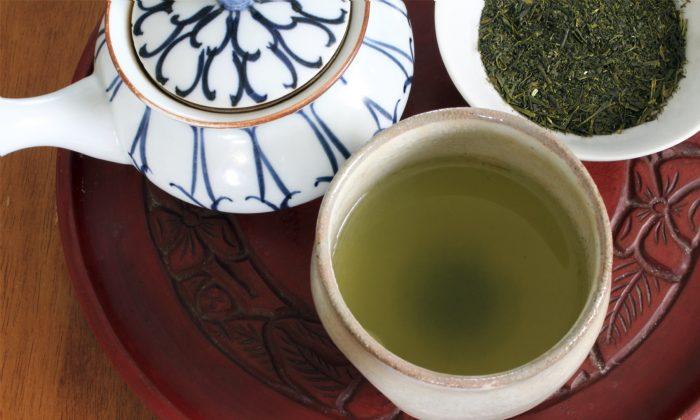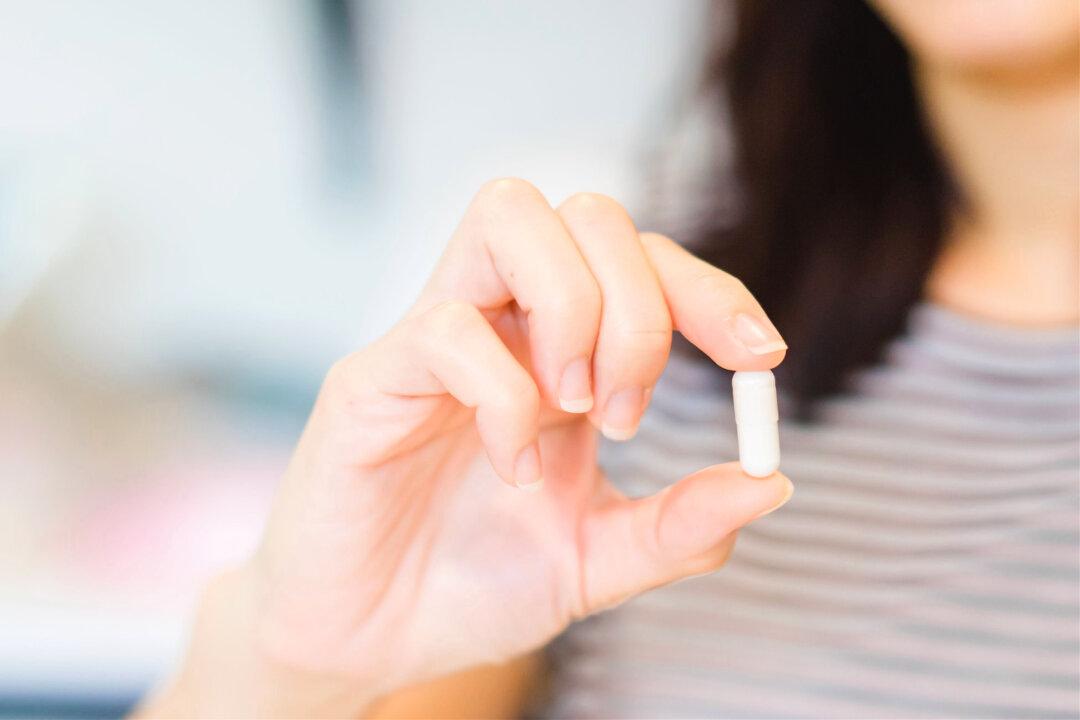Aside from water, tea is the most commonly consumed beverage in the world. In the US, black tea is by far the most popular, but green tea (which accounted for just 15 percent of the tea consumed in America in 2014) may have particularly powerful health benefits.
Regardless of variety, black and green tea (as well as oolong, dark, and white teas) come from the same plant, an evergreen called Camellia sinensis. It is the processing method and degree of oxidization (exposure to oxygen) that creates the different tea types.
While black tea is oxidized, green tea is not oxidized at all after the leaves are harvested. This minimal oxidation may help to keep the beneficial antioxidants in green tea intact. As explained by the World of Tea:
“Controlled oxidation usually begins after tea leaves are rolled or macerated, two processes that break down the cell walls in tea leaves. Chemically speaking, oxidation occurs when the polyphenols in the cell’s vacuoles and the peroxidase in the cell’s peroxisomes come in contact with the polyphenol oxidase in the cell’s cytoplasm.
The resulting reaction converts tea catechins into theaflavins and thearubigins. Theaflavins provide tea with its briskness and bright taste as well as its yellow color, and thearubigins provide tea with depth and body and its orange-brown color.
This conversion of catechins to theaflavins and thearubigins means that the longer the oxidation, the lower the amount of catechins in the finished tea. Also, during oxidation chlorophylls are converted to pheophytin, a pigment that lends to the dark color of oxidized teas. Lipids, amino acids, and carotenoids also degrade during oxidation to produce some of tea’s flavor and aroma volatile compounds.”

Drinking Green Tea Every Week May Slow Mental Decline
Green tea shows promise for protecting brain health. In a study presented at the 2015 International Conference on Alzheimer’s and Parkinson’s Diseases, those who drank green tea one to six days a week had less mental decline than those who didn’t drink it.
In addition, the researchers revealed that tea drinkers had a lower risk of dementia than non-tea drinkers. It’s not the first time green tea has been linked to brain health. In a study of 12 healthy volunteers, those who received a beverage containing 27.5 grams of green tea extract showed increased connectivity between the parietal and frontal cortex of the brain compared to those who drank a non-green tea beverage.
The increased activity was correlated with improved performance on working memory tasks, and the researchers believe the results suggest green tea may be useful for treating cognitive impairments, including dementia. According to the study authors:
“Our findings provide first evidence for the putative beneficial effect of green tea on cognitive functioning, in particular, on working memory processing at the neural system level by suggesting changes in short-term plasticity of parieto-frontal brain connections.
Modeling effective connectivity among frontal and parietal brain regions during working memory processing might help to assess the efficacy of green tea for the treatment of cognitive impairments in psychiatric disorders such as dementia.”

What Gives Green Tea Its ‘Super Powers’?
Green tea is rich in naturally occurring plant compounds called polyphenols, which can account for up to 30 percent of the dry leaf weight of green tea. Within the group of polyphenols are flavonoids, which contain catechins. One of the most powerful catechins is epigallocatechin-3-gallate (EGCG), which has been shown to positively impact a number of illnesses and conditions.
Green tea also contains theanine, an amino acid that crosses the blood-brain barrier and has psychoactive properties. Theanine increases levels of gamma-aminobutyric acid (GABA), serotonin, dopamine, and alpha wave activity, and may reduce mental and physical stress and produce feelings of relaxation.
Theanine may also help to prevent age-related memory decline and has been shown to affect areas of your brain involved in attention and complex problem-solving.

Green Tea May Be a Whole-Body Health Tonic
Tea has been enjoyed for close to 5,000 years. It was reportedly discovered in 2737 BC when tea leaves accidentally blew into Chinese Emperor Shen-Nung’s pot of boiling water. Tea has been used traditionally as a beverage and healing tonic ever since. As reported by the University of Maryland Medical Center:
“In traditional Chinese and Indian medicine, practitioners used green tea as a stimulant, a diuretic (to help rid the body of excess fluid), an astringent (to control bleeding and help heal wounds), and to improve heart health.
Other traditional uses of green tea include treating gas, regulating body temperature and blood sugar, promoting digestion, and improving mental processes.”
Modern-day research has also confirmed green tea’s myriad of health benefits, which extend even beyond brain health. What else is green tea good for?
Reduced Mortality and Chronic Inflammation
Drinking green tea is associated with reduced mortality due to all causes, as well as mortality due to heart disease. Research also shows holistic benefits to green tea consumption, including lower blood pressure, oxidative stress, and chronic inflammation.
Heart Health
Green tea improves both blood flow and the ability of arteries to relax, with research suggesting a few cups of green tea each day may help prevent heart disease.
Study results also show EGCG can be helpful for the prevention of arteriosclerosis, cerebral thrombus, heart attack, and stroke—in part due to its ability to relax your arteries and improve blood flow.
Type 2 Diabetes
One study found people who consume six or more cups of green tea daily had a 33 percent lower risk of developing type 2 diabetes than those who consumed less than one cup per week.
Weight Loss
There is some evidence that long-term consumption of green tea catechins is beneficial for burning fat and may work with other chemicals to increase levels of fat oxidation and thermogenesis. According to research in Physiology & Behavior:
“Positive effects on body-weight management have been shown using green tea mixtures. Green tea, by containing both tea catechins and caffeine, may act through inhibition of catechol O-methyl-transferase, and inhibition of phosphodiesterase. Here the mechanisms may also operate synergistically.
A green tea-caffeine mixture improves weight maintenance, through thermogenesis, fat oxidation, and sparing fat free mass… Taken together, these functional ingredients have the potential to produce significant effects on metabolic targets such as thermogenesis and fat oxidation.”
Bone Health
Green tea polyphenols combined with a form of vitamin D called alfacalcidol could boost bone structure and strength, according to a new study in mice. The mixture may reverse damage to bones caused by lipopolysaccharide (LPS) induced chronic inflammation, which could in turn reduce the risk of osteoporosis.
Green tea is a relative newcomer in the bone-health arena, but previous studies have also found that epigallocatechin-3-gallate (EGCG), a component of green tea, blocks the activity of two molecules, IL-6 and cyclooxygenase-2 (Cox-2), which play a role in breaking down bone.
Vision Health
Catechins in green tea could help protect you against glaucoma and other eye diseases, as research found that the compounds travel from your digestive system into the tissues of your eyes. During the study, the catechins found in green tea were absorbed into various parts of the eyes anywhere from 30 minutes to 12 hours after rats were given tea.
Cancer
Green tea components have been shown to downregulate the expression of proteins involved in inflammation, cell signalization, cell motility, and angiogenesis, while an association between green tea intake and decreased risk of cancers (including ovarian and breast) have been reported.
Previous research has shown that green tea polyphenols act on molecular pathways to shut down the production and spread of tumor cells. They also discourage the growth of the blood vessels that feed the tumors. EGCG even acts as an antiangiogenic and antitumor agent, and helps modulate tumor cell response to chemotherapy.

Tea Readily Absorbs Pollutants from Soil
It’s difficult to find many drawbacks to tea, but there is one potential issue you should be aware of: pollutants. Green tea plants are known to be especially effective at absorbing lead from the soil, which is then taken up into the plants’ leaves. Areas with excessive industrial pollution, such as China (where nearly 90% of the world’s green tea is produced), may therefore contain substantial amounts of lead.
According to the ConsumerLab.com analysis, tea from brands like Lipton and Bigelow contained up to 2.5 micrograms of lead per serving compared to no measurable amounts in Teavana brand, which gets its tea leaves from Japan. While the lead in the tea leaves is not thought to leach very effectively into the tea you end up drinking, if you’re consuming Matcha green tea, one of my favorites, it’s especially important that it comes from Japan instead of China.
Matcha tea contains the entire ground tealeaf, and can contain over 100 times the EGCG provided from regular brewed green tea. Both black and green teas are also naturally high in fluoride, even if organically grown without pesticides. This is because the plant readily absorbs fluoride thorough its root system, including naturally occurring fluoride in the soil.
According to fluoride expert Jeff Green, who sadly passed away unexpectedly last year, there are reports of people who have developed crippling skeletal fluorosis from drinking high amounts of iced tea alone. If you live in an area with fluoridated drinking water, as the majority of Americans do, then you could be getting a double dose of fluoride when you drink tea.
When selecting tea of any kind, it should preferably be organic (to avoid pesticides) and grown in a pristine environment because, as mentioned, tea is known to accumulate fluoride, heavy metals, and other toxins from soil and water. A clean growing environment is essential to producing a pure, high-quality tea.

A Quick Trick to Boost the Health Benefits of Your Tea
To boost the benefits of green tea, add a squirt of lemon juice to your cup. Previous research has demonstrated that vitamin C significantly increases the amount of catechins available for your body to absorb. In fact, citrus juice increased available catechin levels by more than five times, causing 80 percent of tea’s catechins to remain bioavailable.
On the other hand, while adding lemon juice is beneficial, adding milk is not. The proteins in milk may bind to and neutralize the antioxidants in tea, such that its health benefits are significantly reduced. One study even found, “All [beneficial vascular protective] effects were completely inhibited by the addition of milk to tea.”
Finally, know what to look for in terms of quality. A telltale sign of high-quality green tea is that the tea is in fact green. If your green tea looks brown rather than green, it’s likely been oxidized, which can damage or destroy many of its most valuable compounds. Many enjoy using loose tea leaves, which ConsumerLab found may offer even more antioxidants (while also avoiding potential toxins in tea bags).
A cup of green tea will give you anywhere from 20-35 mg of EGCG, so three in a day will supply you with 60-105 mg. There are some studies that have used much higher doses than this -- upwards of 1,500 mg a day -- but as of now there’s now clear-cut evidence of exactly how much is best.
The good news is that much of the research on green tea has been based on about three cups daily, which is easily attainable, and enjoyable, for most people. Here are a few simple guidelines for making the “perfect” cup of tea:
- Bring water to a boil in a tea kettle (avoid using a non-stick pot, as this can release harmful chemicals when heated)
- Preheat your teapot or cup to prevent the water from cooling too quickly when transferred. Simply add a small amount of boiling water to the pot or tea up that you’re going to steep the tea in. Ceramic and porcelain retain heat well. Then cover the pot or cup with a lid. Add a tea cozy if you have one, or drape with a towel. Let stand until warm, then pour out the water
- Put the tea into an infuser, strainer, or add loose into the tea pot. Steeping without an infuser or strainer will produce a more flavorful tea. Start with one heaped teaspoon per cup of tea, or follow the instructions on the tea package. The robustness of the flavor can be tweaked by using more or less tea
- Add boiling water. Use the correct amount for the amount of tea you added (i.e. for four teaspoons of tea, add four cups of water). The ideal water temperature varies based on the type of tea being steeped:
- White or green teas (full leaf): Well below boiling (170-185° Fahrenheit or 76-85° Celsius). Once the water has been brought to a boil, remove from heat and let the water cool for about 30 seconds for white tea and 60 seconds for green tea before pouring it over the leaves
- Oolongs (full leaf): 185-210° F or 85-98° C
- Black teas (full leaf) and Pu-erhs
- Cover the pot with a cozy or towel and let steep. Follow steeping instructions on the package. If there are none, here are some general steeping guidelines. Taste frequently as you want it to be flavorful but not bitter:
- Oolong teas: 4-7 minutes
- Black teas: 3-5 minutes
- Green teas: 2-3 minutes
- Once the desired flavor has been achieved you need to remove the strainer or infuser. If you’re using loose leaves, pour the tea through a strainer into your cup and any leftover into another vessel (cover with a cozy to retain the heat)






